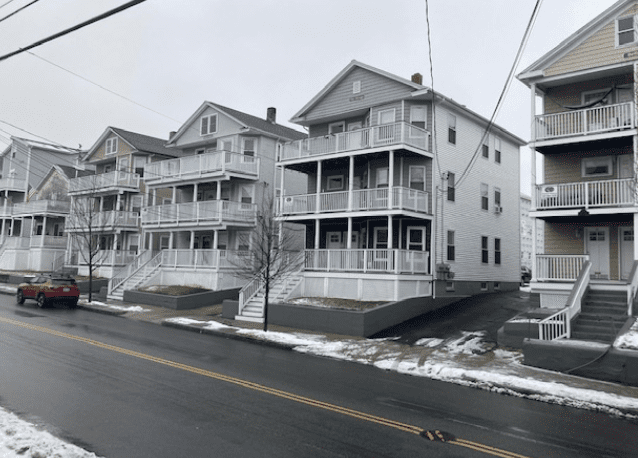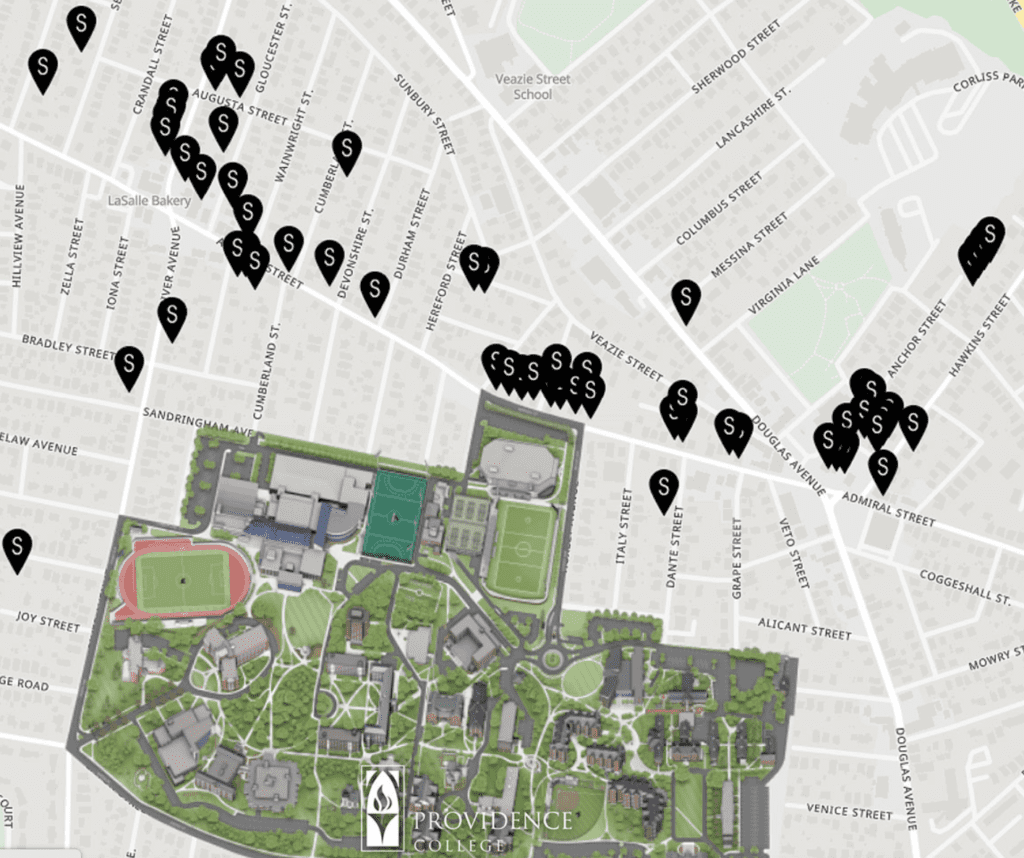Search Posts
Recent Posts
- Christopher Buonanno running for Cranston City Council, city-wide April 27, 2024
- Rhode Island Weather for April 27, 2024 – John Donnelly April 27, 2024
- Eat, Play, Learn: Summer opportunities fair for Providence – TODAY April 27, 2024
- Caitlyn Clark and breaking the glass ceiling for women in all sports – John Cardullo April 27, 2024
- In the news… your quick look at the week ending April 27th April 27, 2024
Categories
Subscribe!
Thanks for subscribing! Please check your email for further instructions.

Providence College “Strive” housing makes PPS 2024 Most Endangered Places List – (updated)
The Providence Preservation Society assembles an annual list of “most endangered places” to bring attention to vulnerable places and heritage across the city that are of architectural, historic, or cultural significance.
Previously known as the “Most Endangered Properties List,” and now called the Most Endangered Places List, this name change better reflects the diversity of place-based heritage in Providence. Nominated by members of the community, these are places of connection, history, and shared identity. By recognizing this at-risk heritage, PPS seeks to celebrate and protect our shared cultural landscape, helping to build a more just, equitable, and inclusive city.
First on the list for these Neighborhoods: Wanskuck, Elmhurst, Smith Hill, Washington Park, College Hill, are the Rental Properties on Eaton Street – and surrounding streets.
Rental properties on Eaton Street
“Over the past fifteen years or so, a single development company has bought nearly one hundred houses and other buildings in Providence, mostly along Providence’s Admiral Street and nearby side streets in the Elmhurst/Wanskuck neighborhood… House after house has been branded with signs on their facades identifying them as “Strive” dwellings. The situation is troubling. This company is changing the character of the area from one of mostly small homes characterized by individual ownership or rentals by a single landlord to a monopolistic complex under the management and control of a single company. Opportunities for home ownership are being reduced.”
— Wanskuck resident Patricia Raub, Adjunct Professor, Providence College
In many neighborhoods across the city, developers are buying affordable and mid-priced single and multi-family housing units for conversion into expensive rental properties. While this is not solely taking place in neighborhoods abutting the city’s many colleges and universities, it is pronounced in town-gown border zones surrounding Providence College, Johnson & Wales, and Brown University. Whole blocks that were once occupied by families are becoming high-end, high-occupancy rentals, many of them for students.
Providence benefits in many ways from the presence of our institutions of higher education, but the pace and scale of these developments are fundamentally altering the nature and character of many of these historic neighborhoods across the city as families are displaced and community connections are broken. From its inception, PPS has advocated for the preservation of Providence’s neighborhoods – not just for individual buildings or landmarks – and in 2024, we seek to work in coalition with organizations and civic leaders who have long fought for housing justice, to preserve community heritage and connection in the face of these pressures.
Who is Strive?

StriveRI recently posted an article published by Providence College, heralding them for their work in creating and managing student housing. Noting PC alum, Joseph Colaluca ’09’s work with the company, the article begins: “Visitors to Providence College’s campus can’t help but notice signs of development along Admiral Street — literal signs. The name “Strive,” simple white letters on a black background, adorns dozens of properties in the neighborhood and across the city.” – Read the article further at: https://news.providence.edu/joseph-colaluca-09-15g-is-the-man-behind-strive-real-estate
UPDATE:
Providence College, when reached for comment, noted that most of the houses on Eaton Street are owned by 02908 Club (in photo, top), and that while a “small number of students” do rent from Strive on Admiral St, most live on Eaton Street and other side streets, which is not owned by Strive.
From PC’s Steve Maurano: “We do recognize that Providence and other cities and towns across the state are facing a number of issues related to housing. As far as the city of Providence is concerned, the number of PC students who live off campus has dropped considerably over the last decade from about 1,200-1,500 ten years ago to about 750-800 today. However, students from other colleges and universities have now chosen to live in the Elmhurst neighborhood, so while the total number of students living in and around Providence College may not have dropped, the percentage of students who attend PC has done so.”
_
Here are the others properties listed by PPS, for a total of 8 most endangered – go to: https://ppsri.org/advocacy/mep/2024mep/ for details on each.
2024 Most Endangered Places List
- Neighborhoods Under Pressure from Student Housing Gentrification // Wanskuck, Elmhurst, Smith Hill, Washington Park, and College Hill.
- Cranston Street Armory (1907) // 340 Cranston Street, West End.
- Providence Public School Buildings, as represented by Asa Messer Elementary School and Mount Pleasant High School // Citywide, 1655 Westminster Street and 434 Mount Pleasant Avenue.
- Grace Church Cemetery (1834, 1843, c. 1860) // 10 Elmwood Avenue.
- Sacred Places, as represented by the Sons of Jacob Synagogue, Broad Street Synagogue, and Cathedral of St. John // Citywide, 24 Douglas Avenue, 688 Broad Street, and 276 North Main Street.
- South Providence Waterfront and Providence Gas Purifier Building // 200 Allens Avenue and South Providence Waterfront.
- Atlantic Mills Complex (1863, 1882) // 100 Manton Avenue, Olneyville.
- Industrial Trust Building, aka Superman Building (1928) // 111 Westminster Street, Downtown.
This is a developing story – we have reached out to Providence College for a statement regarding their housing options being listed.

What is historic about an area that would be a ghetto without PC? The college has been there for over a hundred years. The neighborhood exists BECAUSE of the college. Look up photos from when the college was incorporated– all grass. Why are you attacking institutions and companies who follow the laws– if you want the rules changed, hit up your representatives. It is not these companies’ responsibility to create more red tape. PPS Nimbys from College Hill pointing fingers at the same things they and their parents did to that neighborhood. A better question for PC is why they continue employing people who dislike the college. If Prof. Raub doesn’t like it, she can work for Brown U. They have already “gentrified” College Hill. I see nothing attractive about more dense affordable housing– the Chad Brown Street area near PC is constantly violent. I’d rather see an Eaton Street party than a drive-by.